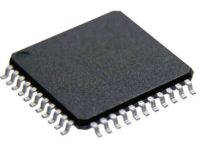Samsung’s New Transistor Structure using Graphene
Samsung Electronics has Developed a new Transistor Structure using Graphene to increase the possibilities of transistor in future, reported online by the journal Science, 17th May.
 The core R&D incubator for Samsung Electronics, Samsung Advanced Institute of Technology has developed new Graphene Transistor Device structure to hold the Moore’s law true for a decade. This research is regarded as a significant step in the development of transistors, that can overcome the limitations of conventional Silicon Transistors. We all know that Semiconductor Electronics Devices consists of billions of transistors. To increase the speed of Semiconductor devices we have only two options, either reducing the size of individual transistors to shorten the travelling distance of electrons or to increase the velocity of electrons by using materials with higher electron mobility. The Electronics industry has been increasing performance of devices by reducing size for past 40 years. Experts believe that we are reaching the potential limits of scaling down.
The core R&D incubator for Samsung Electronics, Samsung Advanced Institute of Technology has developed new Graphene Transistor Device structure to hold the Moore’s law true for a decade. This research is regarded as a significant step in the development of transistors, that can overcome the limitations of conventional Silicon Transistors. We all know that Semiconductor Electronics Devices consists of billions of transistors. To increase the speed of Semiconductor devices we have only two options, either reducing the size of individual transistors to shorten the travelling distance of electrons or to increase the velocity of electrons by using materials with higher electron mobility. The Electronics industry has been increasing performance of devices by reducing size for past 40 years. Experts believe that we are reaching the potential limits of scaling down.
Graphene is considered as a potential substitute for Silicon, since it possess electron mobility about 200 times greater than that of Silicon. Although the main issue with Graphene is that current cannot be switched off as in conventional semiconductor devices since it is semi-metallic. To represent ‘1’ and ‘0’ digital signals both ON and OFF states are required. Researchers tried to convert Graphene to a semiconductor but it radically decreased the mobility of Graphene.
Samsung Advanced Institute of Technology re-engineered the basic operating principles of digital switches to develop a device that can switch off the current in Graphene transistor without degrading its mobility. Its Graphene-Silicon Schottky barrier can switch the current ON and OFF by changing the height of barrier. Due to its barrier controllable feature, the new device is named as Barristor. Moreover they demonstrated the operations of the most basic gate Inverter and Logic circuit Half Adder using this technology. They also owns 9 major patents related to the structure and the operating method of the Graphene Barristor.
We can hope that this breakthrough will keep Samsung Advanced Institute of Technology at the forefront of graphene-related industries and the pace of Moore’s Law for a decade.








